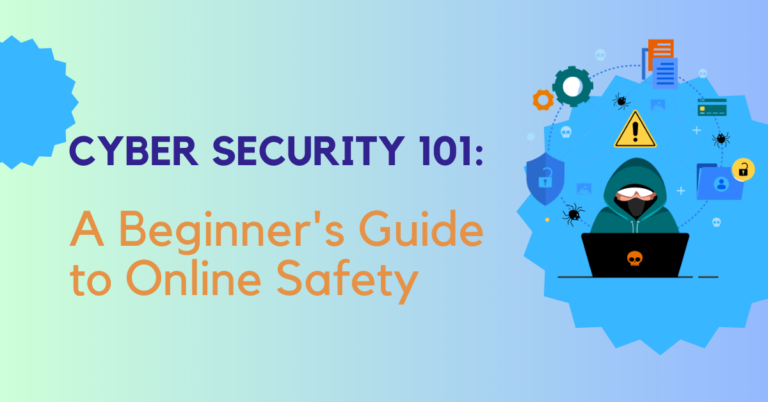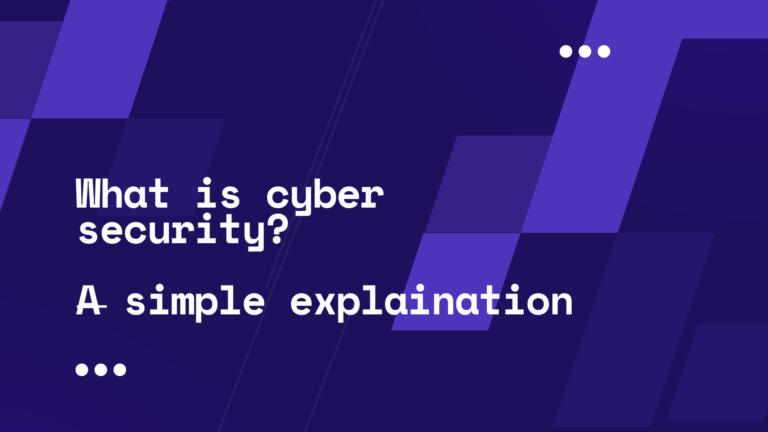Introduction to Web Hacking
Welcome back to another post related to web hacking, In today’s digital age, the skill of web hacking has become an essential component of cybersecurity. Web hacking involves the art of uncovering vulnerabilities in websites, systems, and applications, allowing skilled individuals to enhance security measures and protect against malicious attacks. This article will delve into the mind-blowing techniques that can help you master the art of web hacking, equipping you with the knowledge to identify and mitigate potential threats.
Understanding Web Architecture
To truly comprehend web hacking, it’s crucial to gain a deep understanding of web architecture. This entails exploring the fundamental components and protocols that underpin the web. Key aspects include HTTP (Hypertext Transfer Protocol), HTTPS (Hypertext Transfer Protocol Secure), TCP/IP (Transmission Control Protocol/Internet Protocol), DNS (Domain Name System), and more. By familiarizing yourself with these components, you’ll be able to navigate the intricate web landscape with ease.
Reconnaissance Techniques
Before diving into the world of web hacking, proper reconnaissance is essential. This phase involves gathering crucial information about a target website or system. Open-source intelligence (OSINT) plays a vital role, allowing you to extract data from publicly available sources. Additionally, social engineering techniques can be employed to elicit valuable information from unwitting individuals. Footprinting is another essential aspect, involving the collection of data on the target’s network, infrastructure, and domain registration. This meticulous reconnaissance sets the foundation for successful web hacking endeavors.
Scanning and Enumeration
Once you have collected the necessary information, the next step is to scan and enumerate the target. This process involves utilizing scanning tools to identify potential vulnerabilities. Port scanning comes into play, allowing you to discover open ports on a system and thereby expose potential weaknesses. Service enumeration becomes crucial as well, enabling you to identify the services running on those open ports. Furthermore, vulnerability scanning helps to pinpoint security flaws that can be exploited.
Web Application Vulnerabilities
Web applications often serve as a treasure trove of vulnerabilities waiting to be unearthed. Understanding the most common vulnerabilities found in web applications is paramount to achieving web hacking mastery. Cross-Site Scripting (XSS) is a prevalent vulnerability that allows attackers to inject malicious scripts into web pages, compromising the integrity of the application. SQL Injection is another dangerous vulnerability that allows unauthorized access to databases through maliciously crafted SQL queries. Cross-Site Request Forgery (CSRF) is yet another vulnerability that hackers can exploit to deceive users into performing unintended actions.
Exploiting Web Servers
Web servers are at the core of any website, making them prime targets for hackers. To master web hacking, you must familiarize yourself with various techniques to exploit web server vulnerabilities. Remote File Inclusion (RFI) allows attackers to include and execute remote files, potentially enabling unauthorized access. Directory Traversal, on the other hand, involves exploiting poorly sanitized user input to gain access to restricted directories. Server-Side Request Forgery (SSRF) is yet another technique that can be manipulated to access internal resources and even attack systems behind firewalls.
Session Hijacking and Cookie Manipulation
Gaining unauthorized access to an authenticated session is a coveted skill in web hacking. By mastering session hijacking and cookie manipulation techniques, hackers can impersonate legitimate users and bypass security measures. Session fixation is a technique that involves fixing a session token on a victim’s browser, granting the attacker control over the authenticated session. Session hijacking, on the other hand, allows hackers to intercept and hijack an ongoing session. Cookie poisoning entails tampering with the cookies associated with a user’s session, providing attackers with unauthorized access.
Web Application Firewall (WAF) Bypasses
Web Application Firewalls (WAFs) are designed to protect web applications from attacks, making them a significant obstacle for web hackers. However, advanced techniques can be employed to bypass these security measures and exploit vulnerabilities. Techniques like SQL truncation, evasion techniques, and HTTP parameter pollution can be utilized to outsmart WAFs, allowing hackers to sneak past protective barriers.
Code Injection and Remote Command Execution
Code injection techniques are at the heart of web hacking, enabling hackers to manipulate system behavior and execute malicious commands. Understanding injection techniques like PHP, ASP, and Java injections is essential in gaining mastery of web hacking. Remote Command Execution (RCE) is another technique that allows hackers to execute commands on a target system, granting them control over its operations. The Shell Shock vulnerability, for example, involves exploiting flaws in the Unix Bash shell to execute arbitrary commands.
Exploiting Authentication and Authorization
Weak authentication and authorization mechanisms are a goldmine for hackers. Mastery of web hacking techniques requires an understanding of how to exploit these vulnerabilities. Brute-forcing is a common technique in which hackers systematically attempt to guess usernames and passwords until they gain unauthorized access. Session prediction involves predicting session tokens to gain unauthorized access. Password cracking, whether through brute-force or dictionary attacks, relies on exploiting weak password choices to infiltrate systems.
Advanced Persistent Threats (APT)
Advanced Persistent Threats (APTs) represent highly sophisticated techniques employed by skilled hackers. In the world of web hacking, these threats require keen awareness and understanding. Spear phishing is an APT technique involving highly targeted and personalized phishing attacks. Zero-day exploits involve exploiting vulnerabilities that are unknown to the software vendor. Advanced social engineering techniques are employed to manipulate individuals into divulging sensitive information or performing actions that compromise security.
Web Defacement and Denial-of-Service (DoS) Attacks
Web defacement and denial-of-service (DoS) attacks are aimed at disrupting online services and making a statement. Web hackers who have mastered these techniques can deface websites, altering their appearance to display messages or symbols that challenge security measures. DoS and DDoS attacks, on the other hand, overwhelm a target system with a flood of requests, rendering it inaccessible to legitimate users. DNS amplification and botnets are commonly employed in these types of attacks, magnifying their impact and increasing their effectiveness.
Web Security Best Practices
While web hacking techniques are crucial to gaining mastery, it’s equally important to understand how to secure web applications against such attacks. Implementing comprehensive web security best practices is essential in minimizing vulnerabilities and mitigating potential threats. Input validation ensures that all user input is carefully inspected and sanitized to prevent malicious injections. Secure coding practices should be followed to prevent common vulnerabilities. Regular vulnerability assessments should be conducted, allowing organizations to identify and patch security flaws promptly.
Ethical Hacking and Bug Bounty Programs
Ethical hacking is a crucial aspect of web security, as it involves authorized individuals using their skills to identify and rectify vulnerabilities. Participating in bug bounty programs is an excellent way to leverage your web hacking expertise and contribute to a more secure online environment. Responsible disclosure of identified vulnerabilities ensures that the information is shared with the affected parties in a secure and timely manner. It is essential to navigate the legal and ethical considerations that govern web hacking activities, ensuring that your actions are well within the boundaries of the law.
Summary and Key Takeaways
Mastering the art of web hacking requires a deep understanding of various techniques, vulnerabilities, and security measures. This article has explored ten mind-blowing techniques, but it is important to remember that ethical hacking and responsible practice should always be prioritized. Continuous learning in the ever-evolving field of cybersecurity is essential to stay on top of the latest threats and defenses. By adopting a friendly and conversational writing style, this article aims to equip aspiring web hackers with the knowledge and tools they need to navigate this intricate domain successfully.
FAQ
- What is web hacking, and why is it imporant?
- Web hacking is the process of finding and exploiting vulnerabilities in web applications and websites. It is important because it helps identify and fix security weaknesses, protects user data, and mitigates the risk of attacks.
- Is web hacking legal? What are the ethical considerations?
- Web hacking is generally legal when performed by authorized individuals or organizations with proper consent, such as ethical hackers or security professionals conducting penetration testing. Ethical considerations include obtaining proper authorization, adhering to a code of ethics, and ensuring the responsible disclosure of vulnerabilities to the affected parties.
- How can I enhance my web hacking skills?
- To enhance your web hacking skills, you can:
- Gain knowledge through self-study and online resources.
- Practice on intentionally vulnerable applications and platforms.
- Participate in Capture the Flag (CTF) competitions and hacking challenges.
- Join security communities and forums to learn from experienced professionals.
- Are bug bounty programs worth participating in?
- Yes, bug bounty programs are worth participating in.
- What are the potential consequences of unauthorized web hacking?
- Potential consequences of unauthorized web hacking include legal repercussions, criminal charges, financial penalties, and damage to personal and professional reputation.



